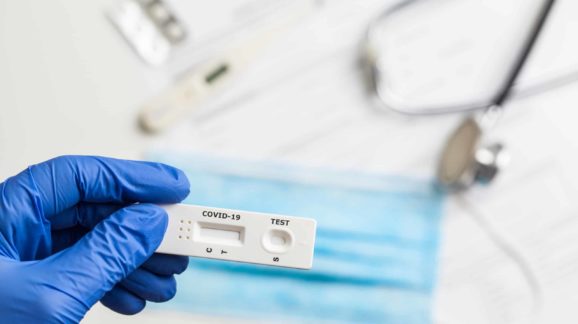Leading from Behind
Long after many states and localities dropped their mask mandates, the Centers for Disease Control and Prevention (CDC) finally revised its metrics to guide community Covid-19 prevention measures. Last week, the agency went from recommending indoor masking in all schools and roughly 95 percent of U.S. counties to recommending masks in about 37 percent of U.S. counties comprising 28 percent of the U.S. population. What took so long?
The new guidelines use three metrics of virus severity to determine what the agency calls “community levels” of disease—new Covid cases and new Covid hospitalizations (both per 100,000 population in the past seven days), and the share of hospital beds occupied by patients admitted for the disease. The guidelines classify counties as experiencing low, medium, or high levels. Everyone in a high-level county should wear a mask in public indoor settings, the CDC says, but indoor masks are not recommended, even in schools, in low and medium counties.
The agency had previously relied on just two metrics—new Covid-19 cases per 100,000 people and the test positivity rate, both measured over the last seven days—to measure the level of community transmission. Counties were ranked into four tiers—low, moderate, substantial and high—with indoor masking recommended for areas of “substantial” or “high” coronavirus transmission and for all schools, regardless of tier.
The rationale for the change is to move from measuring community transmission to measuring how much strain the virus is placing on a community’s health-care system. But the old system never made much sense. It took no account of vaccination rates, even though vaccines were initially highly effective against viral transmission. And even as effectiveness against transmission decreased, vaccines remained effective at curbing the severity of Covid-19 illness. Both old-guideline metrics—case rates and positivity rates—depended on the amount of testing in a community, which varied substantially based on access to testing and peoples’ willingness to be tested.
The previous regulations set arbitrary and overly cautious thresholds. “Substantial” and “high” transmission—50 to 100 cases per 100,000, or a positivity rate between 8 percent and 10 percent; and 100 or more cases per 100,000 people, or a positivity rate of 10 percent or higher— classified nearly the entire country as high or substantial risk and thus subject to mask mandates. Focusing on transmission also communicated very little about the risk Covid-19 posed to individuals and communities. The likelihood that infection would progress to more severe disease such as hospitalization or death was a function largely of the percentage of vulnerable elderly people and people with underlying medical conditions in an area.
Read the full article at City Journal.
